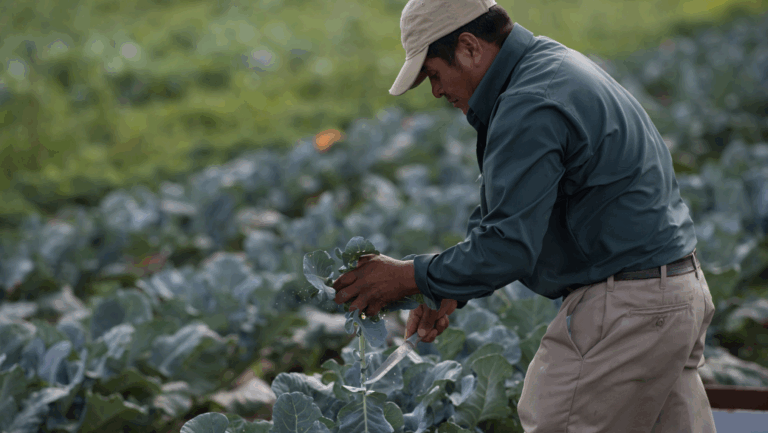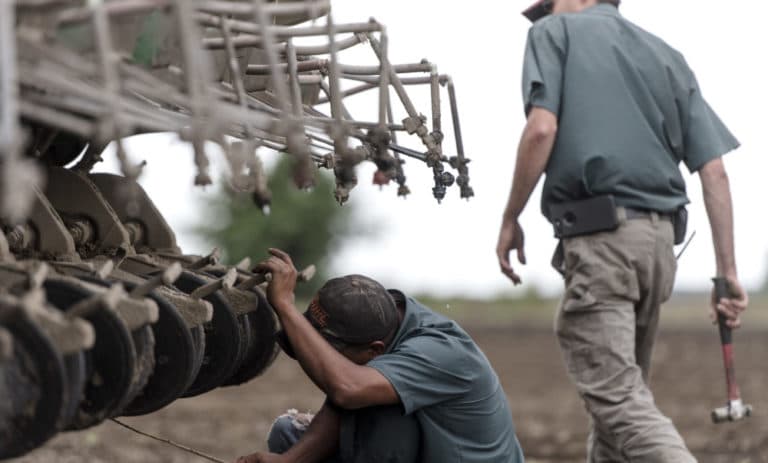2025 Farmland Market Insights: Is Now the Right Time to Buy?
The U.S. farmland market has a history of strong stability and performance. Will that last in 2025?
In 2024, farmland values increased by five percent for total farm real estate, with an increase of 4.7 percent for cropland and 5.2 percent for U.S. pastures. Historically, land values have shown resilience, but market volatility can cause temporary fluctuations and downturns. Many experts predicted a softening in appreciation for the U.S. farmland market and increased competition for land use toward the end of 2024, but there is still a lot of debate on the future of farmland market values.
In this article, we discuss the key factors influencing farmland market trends in 2025 and areas of opportunity for potential and current landowners.
Factors Influencing Farmland Market Trends
Interest Rates and Inflation
Despite recent interest rate reductions, most experts remain cautious in their 2025 farmland forecasts. Even though rates have been cut, they are still relatively high compared to the past five years.
These higher rates are largely due to sticky inflation. March’s Consumer Confidence Index showed consumer expectations for the future at a 12-year low.
“The share of consumers expecting higher interest rates over the next 12 months increased to 54.6% from 52.6% in February, while the share of consumers expecting lower interest rates dropped further to 22.4% from 24.1%.”
Farmland values tend to rise and fall opposite of interest rates. While the farmland market has remained resilient through rate hikes over the last several years, there could be eventual alignment with higher rates should they stay elevated. The Federal Reserve is expected to cut rates modestly in June, possibly signaling strong land purchase demand in the second half of 2025 and strengthening prices.
Commodity Prices
Declining farm profitability in 2024 due to low commodity prices was another factor contributing to a softening farmland market, specifically in areas where commodities like corn and soybean grow. For example, most Iowa farmers cited lower commodity prices as the main reason for this decline.
Things look different this year. At the start of 2025, U.S. farmers were feeling hopeful. A key measure of farmer confidence, the Ag Economy Barometer, rose by five points in January, reaching 141. Farmers were encouraged by higher crop prices in December and January, and fewer were worried about falling prices. Corn and soybean prices in the Eastern Corn Belt increased by nine percent and five percent, respectively. However, recent changes to tariff policies have made some farmers begin to worry about the strength of commodity prices. Cotton is of particular concern, with as much as 85 percent of U.S. cotton production relying on export trade.
States with primary commodities that are expected to perform well will likely have higher cash rent and land values than states with lower-performing commodities.
Input Costs
U.S. farm production expenditures saw a moderate decline of 4.1 percent in 2024. In 2025, farm input costs will be mixed. Farm labor costs will likely increase, which could strain operations that rely on manual labor. However, fertilizer, oil, and interest rates are expected to drop, although tariffs may reverse short-term prices and accessibility for some fertilizer inputs like potash.
Since some costs are rising while others fall, input costs aren’t predicted to weigh heavily on the farmland market. However, regional differences and input use will play a role in determining land valuation. Access to water, soil health, commodity type, and other features could sway the value of land one way or the other.
Farmland Sales
Experts anticipate a wave of ownership transfer in the land market in the next two decades as a significant portion of farmland is owned by farmers 65 years or older.. The American Farmland Trust (AFT) expects 300 million acres of U.S. agricultural land to change hands in the next 20 years. Historically, only around one to two percent of farmland typically comes onto the open market annually. But this approaching wave of ownership transfer indicates that percentage will increase in the coming years.
For now, the industry has seen about 25 percent less farmland available for sale over the past five years. Low turnover rates mean purchase opportunities remain scarce, which helps drive up demand and land values. Despite a softer market, farmland is still considered an attractive asset with competitive long-term total returns. Unlike other real estate investments that rely solely on rental income or resale value, farmland provides diverse income opportunities.
Buying farmland is like buying gold—it holds its value and usually increases over time.
Unlike gold, farmland can also make you money while you own it through crop or livestock sales. There are also tax benefits for farmland ownership that make it a wise investment.
Areas of Opportunity for Aspiring and Current Landowners
A slightly softer market can be a strategic opportunity for current and aspiring landowners looking to purchase farmland. Here’s a few ways aspiring landowners can take advantage.
- Lower cash rents – On average, cash rents are lower. Now is a great time to put away some of that extra cash into savings for a down payment.
- Interest rates – Interest rates are predicted to fall in June after rate cuts. If you have had your eye on land, you may want to start looking for a lender for a summer purchase.
- Land value reductions – Experts forecast farmland value to drop around three percent in 2025. Buyers can take advantage of that slightly reduced price by buying land before the market goes back up.
- Long-term investment potential – Farmland is a historically strong investment. Even when the market dips, the long-term returns usually remain positive.
- Leverage equity – If you have already built up equity in your land, it may be a great time to leverage that equity for a land loan to take advantage of the temporarily lower sale prices.
Already own land? Here are a few ways current landowners can seize opportunities in the current farmland market:
- Expand your holdings – If you’ve been considering purchasing adjacent land or expanding your operation, a softening land market could make it a more affordable time to do so.
- Explore refinancing options – If interest rates decline as expected, refinancing existing loans could lower your borrowing costs and free up capital for other investments.
- Lock in lease agreements – Securing long-term lease agreements now at current rates can help safeguard rental income should land values dip. Consider offering incentives for multi-year leases to retain reliable tenants.
- Improve land productivity – Investing in soil health, irrigation, or infrastructure upgrades now could position you for greater profitability when land values rise again.
- Diversify income streams – Looking into alternative revenue sources, such as agritourism, conservation programs, or renewable energy leases, could provide additional financial stability during market fluctuations.
Partner with a Lender Who Knows the Farmland Market
The farmland market is always changing. With uncertain market forecasts for 2025, working with a lender that understands the inherently changing nature of agriculture is a game changer. AgAmerica has worked alongside landowners for over a decade to secure and optimize farmland profitability.
If you’re interested in a loan for an agricultural land purchase or ready to expand your existing operation, we want to help. Explore our land financing options on our website our contact us today to learn more.
Disclaimer: This article is for informational purposes only and should not be considered financial, legal, or investment advice. Market conditions can change, and readers should consult with financial professionals or industry experts before making any decisions related to farmland investments or transactions.






